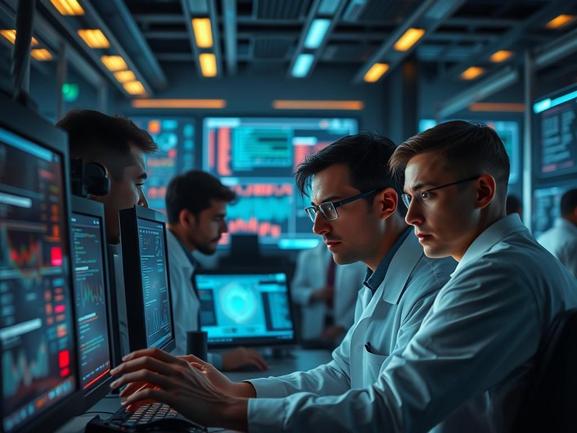The artificial intelligence landscape is currently buzzing with an energy that feels both exhilarating and fraught. It’s a period marked by unprecedented technological leaps, staggering investment, and a fierce global race towards the next frontier – often referred to as Artificial General Intelligence (AGI). Amidst this fervent activity, a key battleground has emerged, not just in algorithms or hardware, but in the human element: talent. The very brightest minds capable of sculpting these future-defining systems are in higher demand than ever before, leading to intense competition and, at times, philosophical clashes about the very nature and purpose of this pursuit.
One of the most public recent manifestations of this tension came from none other than OpenAI CEO Sam Altman, who reportedly pushed back forcefully against aggressive recruitment tactics employed by rivals, specifically naming Meta. Altman’s reported message to his team underscored a distinction he sees as fundamental: the difference between “missionaries” and “mercenaries.” This framing immediately cuts to the core of the debate: is the drive to build AGI rooted in a deep-seated belief in its potential to fundamentally change the world for the better, a higher calling perhaps, or is it primarily motivated by financial incentives, prestige, or short-term market gains? The implication from Altman is clear – he believes the former, the “missionaries” driven by vision and purpose, will ultimately be the ones who succeed in building truly impactful AGI. This isn’t just corporate posturing; it reflects a genuine philosophical divergence in an industry grappling with its profound societal implications. The talent being wooed away isn’t just skilled labor; it’s the very engine driving a revolution, and the philosophy guiding that engine matters immensely.
The intensity of this talent war is directly proportional to the perceived proximity of truly transformative AI capabilities. Leaders in the field, like Google DeepMind’s CEO Demis Hassabis, openly discuss the near-term potential for systems approaching human-level intelligence. Hassabis doesn’t shy away from the potentially disruptive consequences, acknowledging that such advancements could lead to “scary” changes in the job market. We are already seeing the early fruits of this progress with the advent of more sophisticated AI agents – programs designed to perform complex tasks on our behalf, from scheduling appointments to managing travel plans. Sam Altman himself has reportedly hailed these agents as potentially “the next giant breakthrough.” This convergence of factors – the pursuit of AGI, the development of advanced agents, and the acknowledgment of significant societal shifts – elevates the importance of *who* is building these systems and *why*. Is the goal simply to create powerful tools for commercial gain, or is it to responsibly shepherd humanity into a new era alongside intelligent machines? The “missionary” versus “mercenary” distinction takes on critical weight when viewed through this lens of impending, potentially disruptive, technological capability.
Adding another layer of complexity to this high-stakes environment are the internal dynamics and strategic partnerships within the AI ecosystem. The relationship between powerhouses like OpenAI and Microsoft, for instance, is not merely a straightforward business collaboration; it is reportedly intertwined with foundational disagreements, particularly around the very definition and implications of AGI. Leaked information regarding unreleased OpenAI research has hinted at how differing perspectives on what constitutes AGI could potentially complicate negotiations and strategic alignment. This underscores that the path to AGI isn’t a monolithic endeavor; it involves varied visions, competing interests, and the careful navigation of complex alliances. The definition of AGI isn’t just a semantic argument; it has practical consequences for research focus, safety protocols, and the ultimate deployment of these powerful systems. These internal tensions, coupled with external talent pressures, paint a picture of an industry moving at breakneck speed while simultaneously grappling with fundamental questions about its direction and purpose.
Ultimately, while capital, computational power, and raw talent are undoubtedly crucial ingredients in the race for advanced AI, Sam Altman’s emphasis on culture and mission suggests that something more profound may be the decisive factor. Building AGI is not just a technical challenge; it is a grand, perhaps even existential, undertaking. In such an endeavor, a team united by a shared vision, a deep commitment to responsible development, and a belief in the potential positive impact of their work – the “missionaries” – might possess an intrinsic advantage. This isn’t to dismiss the legitimate financial considerations for researchers in a highly competitive market, but rather to highlight that the most dedicated and impactful work may stem from a place of genuine passion and purpose beyond monetary reward. As the industry accelerates towards increasingly capable AI, the question of whether the dominant ethos will be one of mercenary gain or missionary zeal remains open, and the answer may well determine the ultimate shape and impact of the future we are collectively building.
